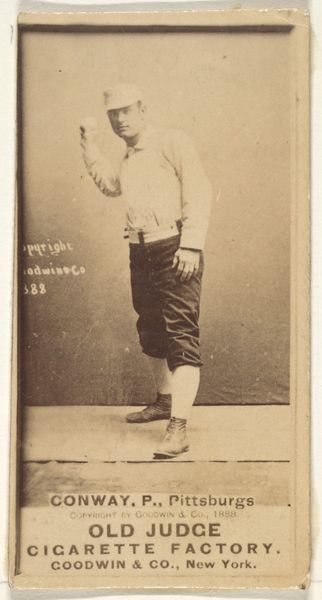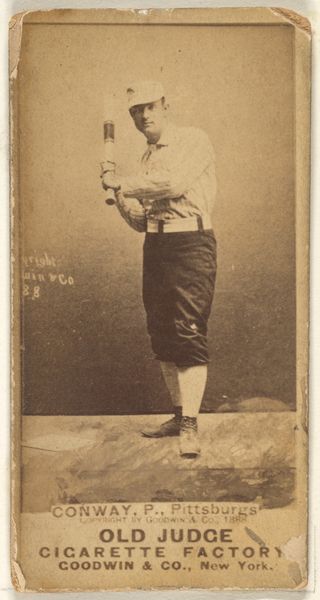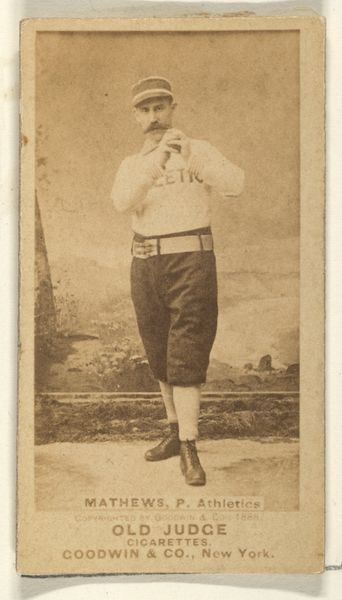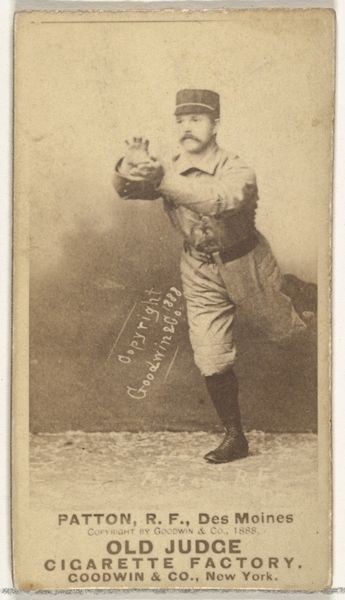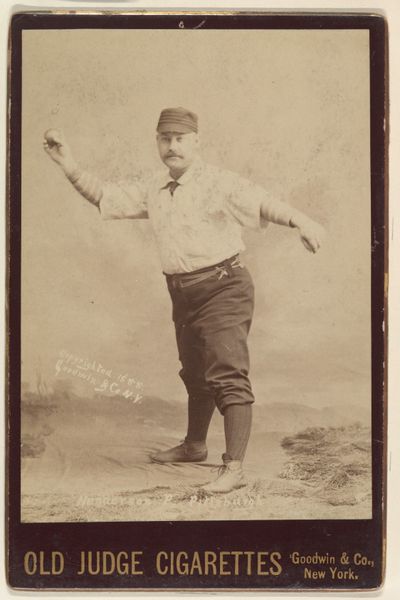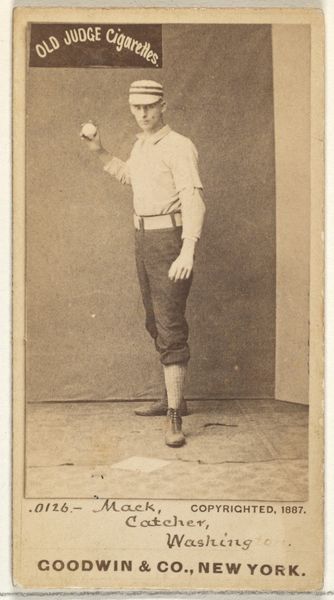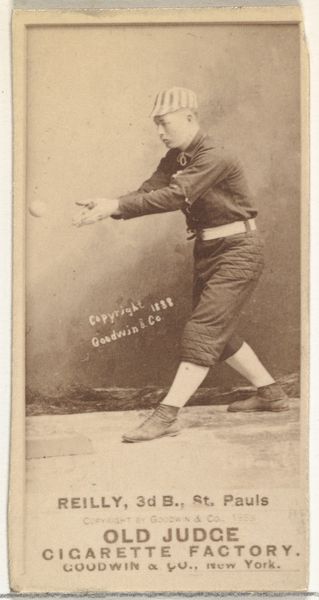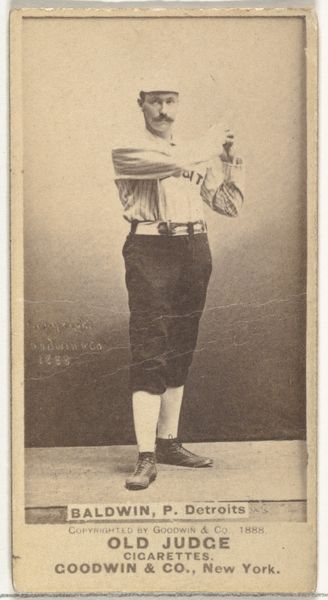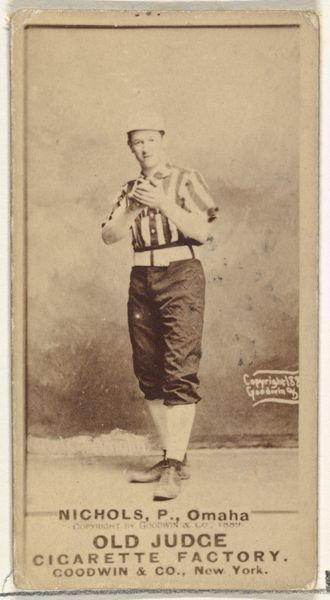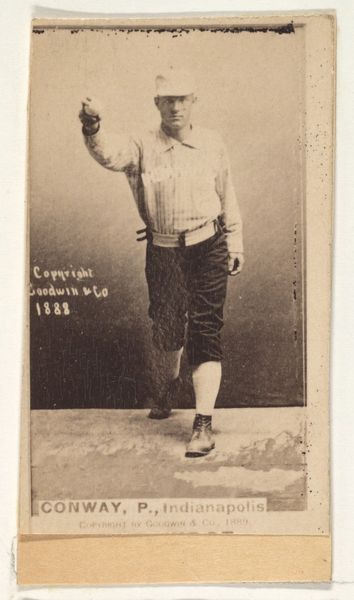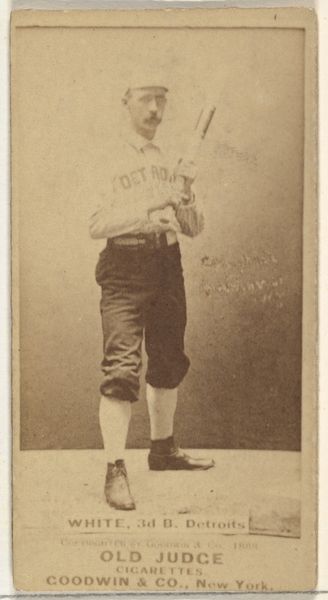
Getzein, Pitcher, Indianapolis, from the Old Judge series (N172) for Old Judge Cigarettes 1888
0:00
0:00
print, photography
#
portrait
#
pictorialism
# print
#
baseball
#
photography
#
men
#
genre-painting
Dimensions: sheet: 2 11/16 x 1 3/8 in. (6.9 x 3.5 cm)
Copyright: Public Domain
Curator: Looking at this baseball card, "Getzein, Pitcher, Indianapolis" from 1888, what strikes you? Editor: It's incredibly staged. The player's pose is unnatural, almost frozen, with a deliberate focus on showcasing the uniform. There's a certain artificiality to the light too. Curator: Indeed. Let's delve into its context. Produced by Goodwin & Company as part of the Old Judge Cigarettes series, these cards were designed as inserts to boost sales, a form of early advertising. These cards document an emergent visual culture of commercialism, sports fandom and celebrity. They functioned as collectible memorabilia circulated broadly among diverse social classes. Editor: The framing is interesting—the almost austere sepia tone contributes a strange gravitas to a marketing trinket. I'm curious about the structural implications. How does its photographic language solidify notions of the heroic athlete for the late 19th century consumer? His stance implies a level of calculated intent; gaze fixed on a precise but unseen locus in space. Curator: The uniformity itself bears witness to societal changes. Sport professionalized during this period—with increasing labor specialization but also cultural anxieties concerning modernity and industry expressed here via the idealization of idealized, hyper-masculine players such as Getzein who were frequently cast with portrait-like aesthetic sensibility to enhance the consumer appeal via sentimental affectations. Editor: It’s fascinating how the soft focus contrasts with the crisp typography beneath; "Old Judge Cigarettes Factory" blazoning what otherwise has some trappings evocative painting techniques utilized earlier that epoch which were often applied as visual metaphors. Curator: Precisely. Through its commodification and distribution, it embodies the industrial spirit of late 19th-century America, transforming baseball from mere pastime into lucrative commerce that shapes cultural meaning by appropriating pre existing models and aesthetics previously assigned higher art categories into commercial strategies to capitalize mass media's burgeoning momentum Editor: A unique fusion indeed; commercial appeal cleverly interwoven with pre-existing painterly sensibilities. Almost disorienting until one perceives overarching compositional unity forged through a carefully considered juxtaposition of media that would foreshadow future pop art movement’s embracement kitsch while valorizing icons associated athletic competition and commerce’ confluence within emergent American media ecosystem! Curator: Agreed. Ultimately this small printed artifact reveals larger social relationships defining American culture today Editor: Its rigid structure offers insights connecting material culture commodification with emerging aesthetic vocabularies!
Comments
No comments
Be the first to comment and join the conversation on the ultimate creative platform.
